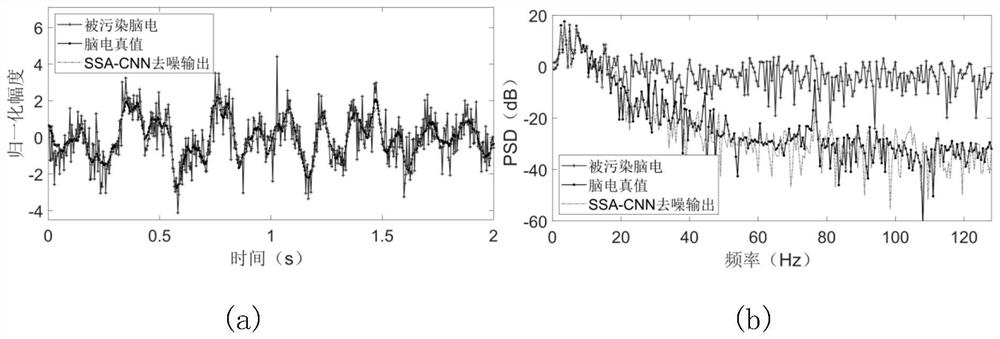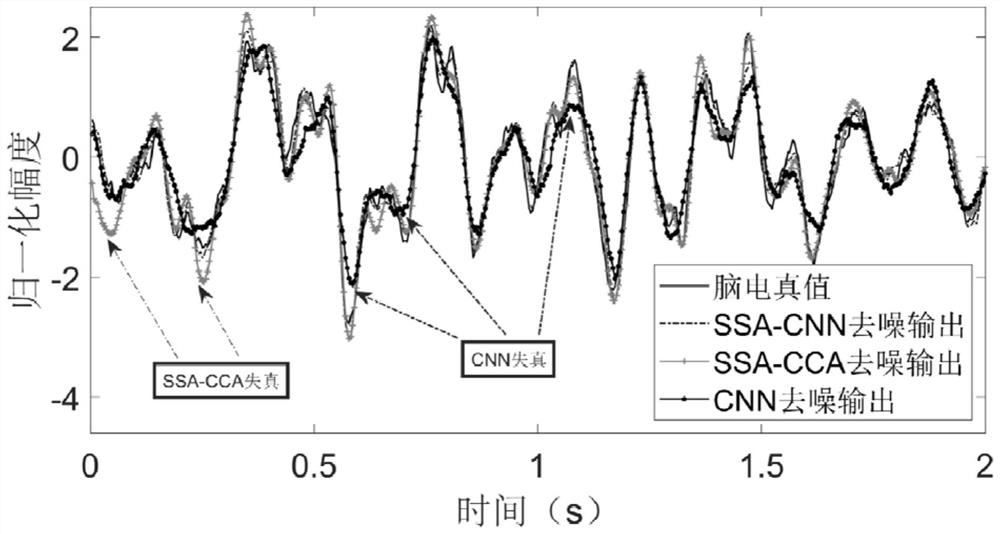Electroencephalogram denoising method
A technology of EEG and EEG signals, applied in the field of EEG denoising, can solve problems such as distortion, and achieve the effect of small distortion and good denoising performance
- Summary
- Abstract
- Description
- Claims
- Application Information
AI Technical Summary
Problems solved by technology
Method used
Image
Examples
Embodiment Construction
[0065] Embodiments of the present invention will be described in detail below. It should be emphasized that the following description is only exemplary and not intended to limit the scope of the invention and its application.
[0066] refer to figure 1 , the embodiment of the present invention provides an EEG denoising method, comprising the following steps:
[0067] S1. Decompose the original EEG signal into different subcomponents through singular spectrum analysis, and set the autocorrelation coefficient threshold to extract subcomponents related to the main component of the EEG signal, and reconstruct the corresponding time series from the subcomponents The main component of the EEG signal; the original EEG signal is usually a polluted EEG signal;
[0068] S2. Subtracting the main component of the EEG signal from the original EEG signal to obtain a residual EEG component;
[0069] S3. Input the residual EEG component into the deep convolutional neural network to extract...
PUM
 Login to View More
Login to View More Abstract
Description
Claims
Application Information
 Login to View More
Login to View More - R&D
- Intellectual Property
- Life Sciences
- Materials
- Tech Scout
- Unparalleled Data Quality
- Higher Quality Content
- 60% Fewer Hallucinations
Browse by: Latest US Patents, China's latest patents, Technical Efficacy Thesaurus, Application Domain, Technology Topic, Popular Technical Reports.
© 2025 PatSnap. All rights reserved.Legal|Privacy policy|Modern Slavery Act Transparency Statement|Sitemap|About US| Contact US: help@patsnap.com



